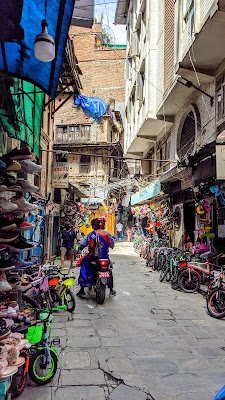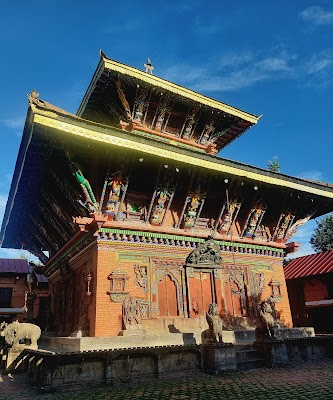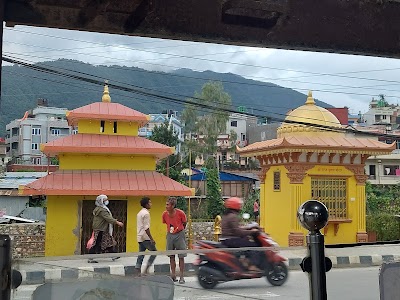Bhaktapur Durbar Square (भक्तपुर दरबार क्षेत्र)
Overview
**Bhaktapur Durbar Square: A Cultural Gem of Nepal**
Nestled in the heart of Bhaktapur, a city in the eastern Kathmandu Valley, **Bhaktapur Durbar Square** is a breathtaking showcase of architectural beauty and rich cultural heritage. This historic square, with its stunning structures, tells the story of the Malla dynasty, which ruled the Kathmandu Valley from the 12th to the 18th century. The artistic prowess and deep-rooted traditions of this era are vividly reflected in every corner of the square, making it a must-visit destination for travelers and history enthusiasts alike.
The Malla kings were instrumental in shaping Bhaktapur Durbar Square into the vibrant hub it is today. During their reign, Bhaktapur—also known as Bhadgaon—thrived as a center of devotion, culture, and social activity. The square became the focal point for religious practices and community gatherings, with its monuments being influenced by both Hindu and Buddhist ideologies, showcasing a harmonious blend of these cultural elements.
One of the standout structures within the square is the **55-Window Palace**, constructed by King Bhupatindra Malla in the 15th century. Named for its extraordinary facade adorned with fifty-five intricately carved wooden windows, this palace served as the royal residence and the administrative heart of the Malla dynasty. Inside, visitors can explore the **Gallery of Traditional Art**, featuring exquisite paintings, sculptures, and ancient artifacts that offer a glimpse into the artistic achievements of the time.
Another captivating site is the **Vatsala Temple**, built in the 17th century and dedicated to the goddess Vatsala Devi. This remarkable Shikhara-style temple is celebrated for its beautifully crafted sandstone walls and the iconic **Bell of Barking Dogs**, which was historically rung to alert townspeople during announcements and emergencies, adding to the vibrant pulse of community life.
Standing tall at five stories, the **Nyatapola Temple** is an iconic feature of Bhaktapur Durbar Square. Constructed in 1702 during King Bhupatindra Malla's reign, this pagoda-style marvel is dedicated to the goddess Siddhi Lakshmi. Each level of the temple is adorned with statues of divine figures, including wrestlers, elephants, and goddesses, showcasing the architectural brilliance and meticulous design that characterized the Malla period.
The **Bhairavnath Temple**, dedicated to Bhairava, the fierce manifestation of Lord Shiva, is another significant landmark in the square. Originally a simple shrine, King Bhupatindra Malla transformed it in the 18th century into a grand three-story temple. Its intricate wood carvings and detailed metalwork exemplify the advanced artistic techniques of the era, further enriching the square’s diverse architectural landscape.
Beyond these major landmarks, Bhaktapur Durbar Square is filled with charming courtyards, statues, and smaller yet significant structures. Each element, from simple shrines to ornate fountains, contributes to the collective beauty and historical significance of the square. The careful layout, with its meticulously paved bricks and thoughtfully designed spaces, offers insights into the urban planning skills of ancient Nepalese engineers.
Despite the devastating earthquake in 2015 that inflicted considerable damage to the square and its monuments, Bhaktapur Durbar Square stands as a symbol of resilience. Restoration efforts, bolstered by the support of local and international communities, are focused on preserving its historical integrity, ensuring that future generations can appreciate its enduring beauty and significance.
The artisans dedicated to constructing and restoring the structures of Bhaktapur Durbar Square utilize traditional methods that have been passed down through generations. Their craftsmanship, characterized by the use of brick, wood, and metal, along with intricate carvings and detailed workmanship, reflects centuries-old practices that continue to thrive today. The sculptors, woodcarvers, and metalworkers devote countless hours to their craft, ensuring that every window, statue, and relief is created with exceptional care and precision.
Ultimately, Bhaktapur Durbar Square is not just a collection of ancient buildings; it is a vibrant living museum that embodies the spirit and history of Bhaktapur and its people. Strolling through the square is akin to stepping back in time, where art, religion, and community are intricately woven into the fabric of daily life. It is a place where the past continues to inspire the present, serving as a testament to the enduring legacy of the Malla dynasty and the skilled artisans who brought their visions to life.








